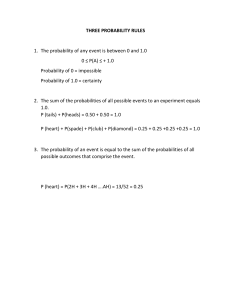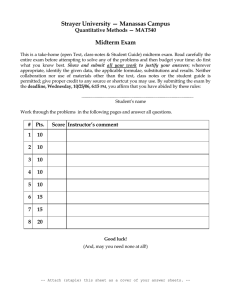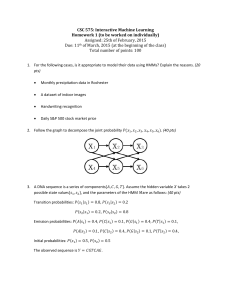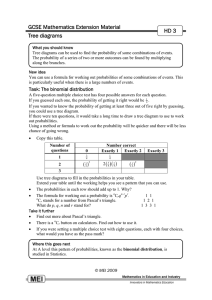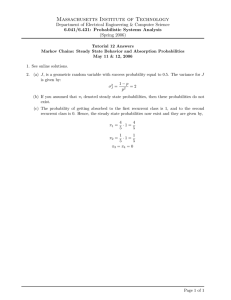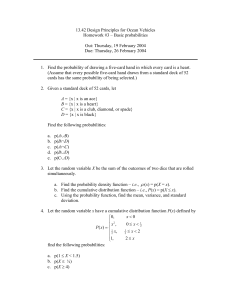AMS 102:03 H
advertisement
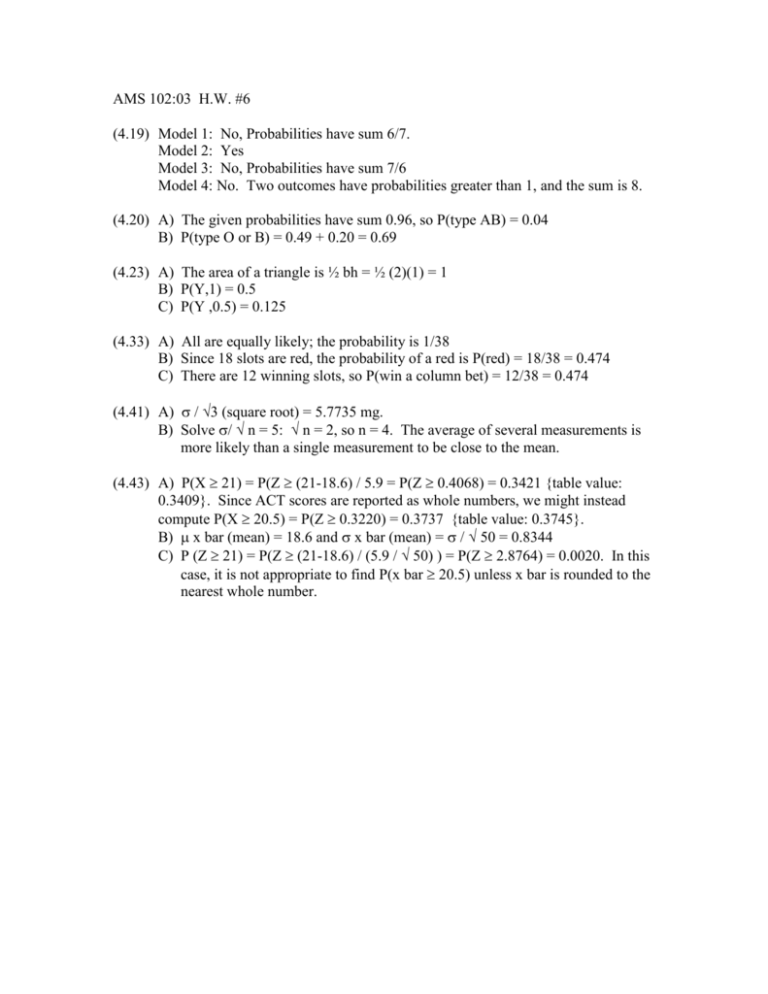
AMS 102:03 H.W. #6
(4.19) Model 1: No, Probabilities have sum 6/7.
Model 2: Yes
Model 3: No, Probabilities have sum 7/6
Model 4: No. Two outcomes have probabilities greater than 1, and the sum is 8.
(4.20) A) The given probabilities have sum 0.96, so P(type AB) = 0.04
B) P(type O or B) = 0.49 + 0.20 = 0.69
(4.23) A) The area of a triangle is ½ bh = ½ (2)(1) = 1
B) P(Y,1) = 0.5
C) P(Y ,0.5) = 0.125
(4.33) A) All are equally likely; the probability is 1/38
B) Since 18 slots are red, the probability of a red is P(red) = 18/38 = 0.474
C) There are 12 winning slots, so P(win a column bet) = 12/38 = 0.474
(4.41) A) / 3 (square root) = 5.7735 mg.
B) Solve / n = 5: n = 2, so n = 4. The average of several measurements is
more likely than a single measurement to be close to the mean.
(4.43) A) P(X 21) = P(Z (21-18.6) / 5.9 = P(Z 0.4068) = 0.3421 {table value:
0.3409}. Since ACT scores are reported as whole numbers, we might instead
compute P(X 20.5) = P(Z 0.3220) = 0.3737 {table value: 0.3745}.
B) x bar (mean) = 18.6 and x bar (mean) = / 50 = 0.8344
C) P (Z 21) = P(Z (21-18.6) / (5.9 / 50) ) = P(Z 2.8764) = 0.0020. In this
case, it is not appropriate to find P(x bar 20.5) unless x bar is rounded to the
nearest whole number.
